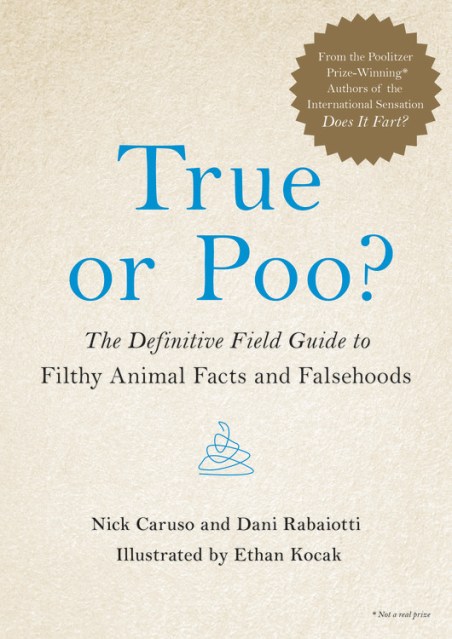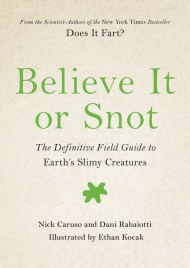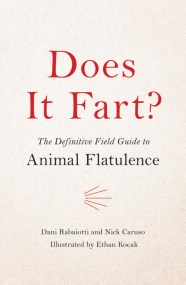Promotion
Use code MOM24 for 20% off site wide + free shipping over $45
True or Poo?
The Definitive Field Guide to Filthy Animal Facts and Falsehoods
Contributors
By Nick Caruso
Formats and Prices
Price
$16.00Price
$21.00 CADFormat
Format:
- Hardcover $16.00 $21.00 CAD
- ebook $9.99 $12.99 CAD
- Audiobook Download (Unabridged)
This item is a preorder. Your payment method will be charged immediately, and the product is expected to ship on or around October 23, 2018. This date is subject to change due to shipping delays beyond our control.
Also available from:
After Does It Fart? comes Number Two…a fully illustrated compendium of animal facts and falsehoods — the more repulsive the better.
Do komodo dragons have toxic slobber? Is it true that a scorpion that sheds its tail dies of constipation? Speaking of poo, do rabbits really have a habit of, err, eating their own? And can you really get high from licking toads, or is that…fake newts?
The answers to all these questions and more can be found in True or Poo?, a manual for disgusting and one-upping your friends and enemies for years to come.
Genre:
- On Sale
- Oct 23, 2018
- Page Count
- 160 pages
- Publisher
- Hachette Books
- ISBN-13
- 9780316528122
Newsletter Signup
By clicking ‘Sign Up,’ I acknowledge that I have read and agree to Hachette Book Group’s Privacy Policy and Terms of Use







